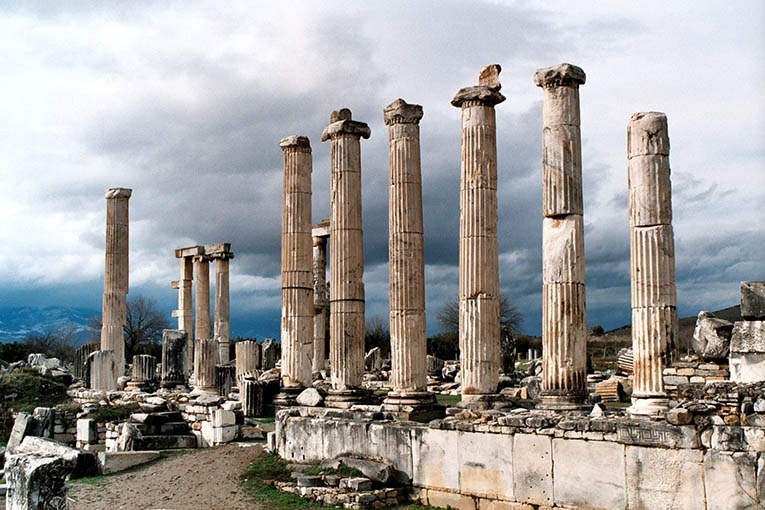Ancient Cities in Turkey
Aphrodisias is located in southwestern Turkey, in the fertile valley formed by the Morsynus River, in the ancient region of Caria. The serial property consists of two components. The first component encompasses the archaeological site of Aphrodisias following the city walls that encircle the city; and the second component includes the marble quarries located northeast of the city. Aphrodisias was founded as a city-state in the early 2nd century BC. An orthogonal street grid defines the pattern of the city; only a few structures, such as the temple of the goddess Aphrodite, are not aligned with the grid. Because the city shared a close interest in the goddess Aphrodite with Sulla, Julius Caesar and the emperor Augustus, Aphrodisias came to have a close relationship with Rome. It obtained a privileged ‘tax-free’ political status from the Roman senate, and developed a strong artistic, sculptural tradition during the Imperial Period. Many elaborately decorated structures were erected during the period of Roman rule, all made from the local marble.
The Cult of Aphrodite was the most important cult of Aphrodisias. The sanctuary at Aphrodisias had a distinctive cult statue of Aphrodite which defined the city’s identity. The Aphrodite of Aphrodisias combined aspects of a local Anatolian, archaic fertility goddess with those of the Hellenic Aphrodite, goddess of love and beauty. This identifying image has been found from Anatolia across the Mediterranean, from the city of Rome to the Levant. The importance of the Aphrodite of Aphrodisias continued well beyond official imperial acceptance of Christianity; the Temple did not become a church until c. AD 500.
The proximity of the marble quarries to the city was a major reason that Aphrodisias became an outstanding high-quality production centre for marble sculpture. Sculptors from the city were famous throughout the Roman Empire. They were well-known for virtuoso portrait sculpture and Hellenistic-style statues of gods and Dionysian figures. In late antiquity (4th-6th centuries AD), Aphrodisian sculptors were in great demand for marble portrait busts and statues of emperors, governors and philosophers in the major centres of the empire – for example, at Sardis, Stratonikeia, Laodikeia, Constantinople and Rome. In this period they were the best carvers of marble statues of their day. The techniques used, the quality of local artistic design, and the production of advanced portrait sculpture gave Aphrodisias a unique place in the Roman world.
Another key aspect of Aphrodisias was its cosmopolitan social structure (Greek, Roman, Carian, pagan, Jewish, Christian) that is abundantly articulated in the site’s 2,000 surviving inscriptions




